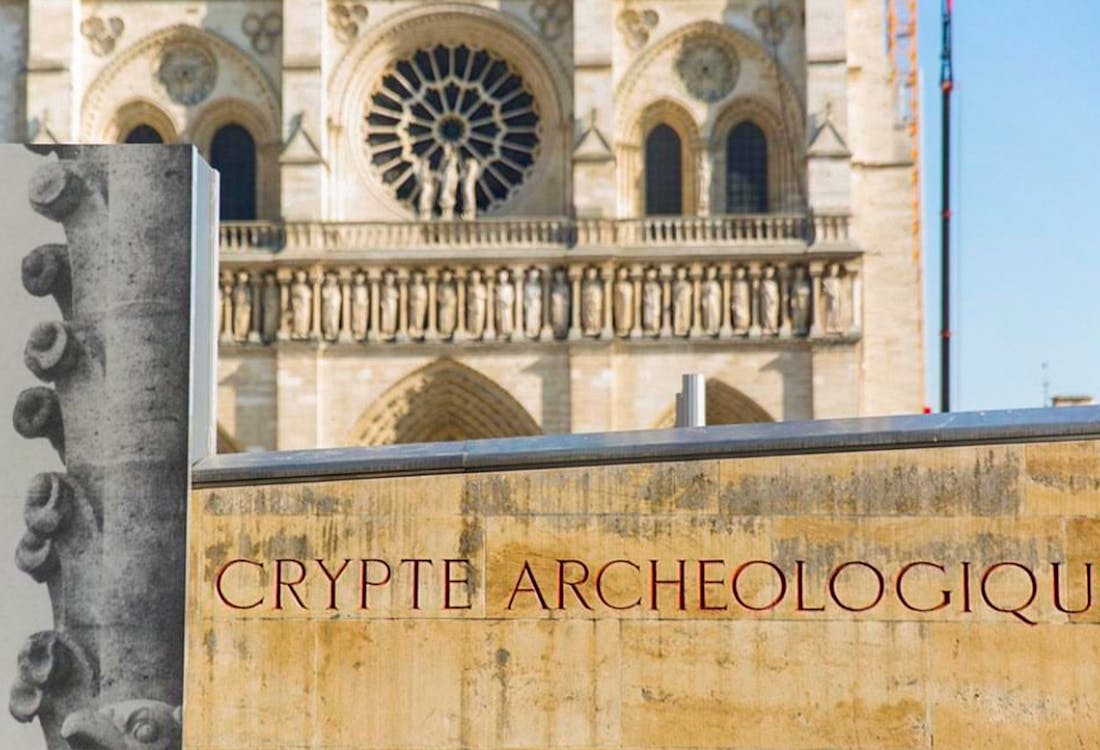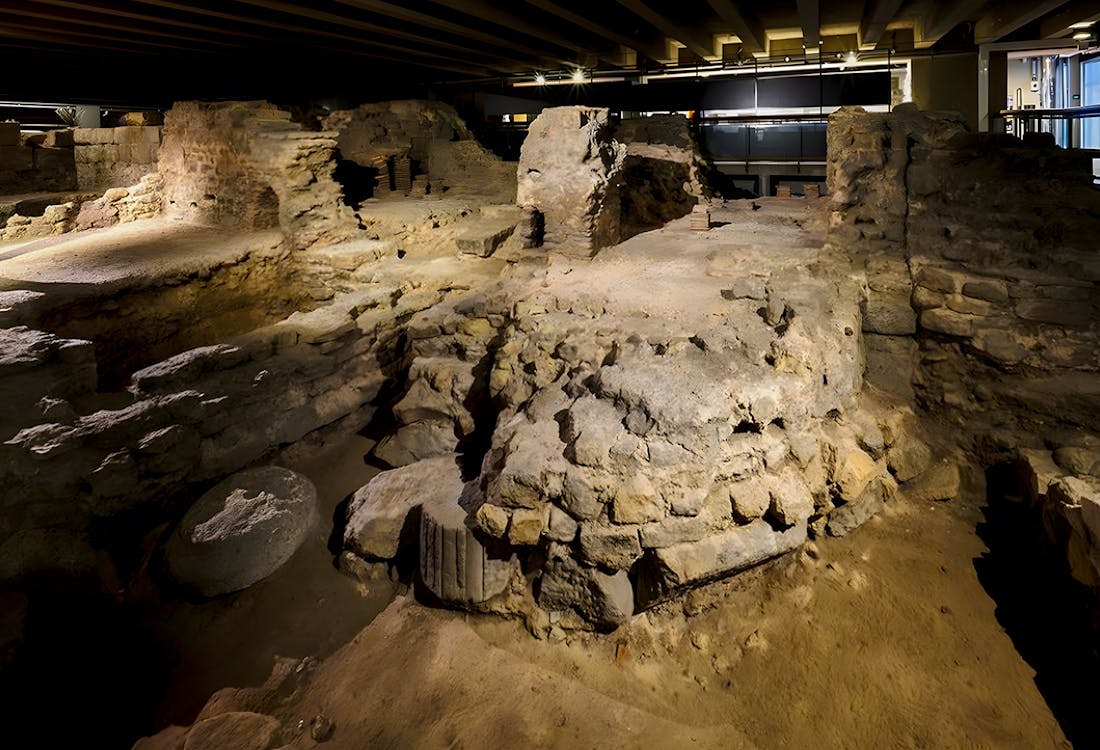Beneath the bustling square of Notre Dame lies a time capsule from Paris's ancient past. This archaeological crypt stretches back to when the city was called Lutetia, through the Paleolithic Age and beyond. Now that Notre Dame has reopened its doors after the devastating fire five years ago, you must check out this fascinating 2,000-square-meter space beneath the cathedral's square. Let me show you why this underground museum is a must-visit and what secrets it holds about Paris's ancient past.
What is in the crypt under Notre Dame?

The Archaeological Crypt of Notre Dame houses an extensive collection of historical ruins and artifacts. The site showcases remarkable remnants, including the Roman-era bathhouses and port wharf, 4th-century defensive walls, medieval street remains, and parts of a Renaissance orphanage called the Found Children Hospice. Most notably, you can still see the ancient Roman under-floor heating system.
The crypt serves as an interactive museum managed by the Musée Carnavalet. You can explore detailed architectural models, maps, and multimedia displays that bring Paris's evolution to life. The exhibits chronicle everything from the city's earliest settlements to 19th-century developments like the sewer system, which was built to combat deadly epidemics.
What led to the discovery of this archaeological site?
The discovery happened by chance in the 1960s when Paris officials decided to clear the medieval buildings crowding the area around Notre Dame Cathedral. During demolition work, archaeologists uncovered something extraordinary—the remains of ancient Paris lying beneath the surface. This sparked a major archaeological project that ran from 1965 to 1972.
The excavations revealed a treasure trove of history, with artifacts and building foundations dating back to antiquity. The findings were so significant that the city of Paris created the Archaeological Crypt. It’s now the world's largest structure of its kind at 118 meters long, as a way to preserve and showcase these discoveries. Today, you can explore evidence of human settlement spanning nearly two millennia of Parisian history.
Recommended tickets
History of the Archeological Crypt
The story of Paris begins on the Île de la Cité, a natural island fortress where the Seine River created a perfect crossing point between northern and southern Gaul. This strategic location would shape the destiny of what would become one of the world's great cities. The island's rich resources, from building stone to river access, made it an ideal settlement spot from ancient times.
Long before Notre Dame Cathedral even existed, this area was home to Celtic tribes, Roman settlers, and medieval traders. The archaeological crypt beneath Notre Dame's square preserves this journey through time, from the Parisii tribe's gold coins to Roman bathhouses, and from medieval streets to Renaissance buildings.

Ancient Origins (3rd Century BC - 5th Century AD)
The Celtic Parisii tribe first settled the island in the 3rd century BC, establishing a prosperous trading post. When Romans arrived, they transformed the settlement into Lutetia, building grand public baths, roads, and a port along the Seine. You can still see remnants of their sophisticated engineering, including parts of the Roman thermal baths and port structures in the crypt.
Medieval Transformation (5th - 15th Century)
As Lutetia evolved into Paris, the Île de la Cité became the heart of the medieval city. The construction of Notre-Dame Cathedral (12th-14th century) transformed the area into a bustling religious and commercial center. The crypt preserves traces of medieval streets and buildings from this vibrant period.
Modern Redevelopment (18th - 19th Century)
Paris's great transformation under Baron Haussmann in the 1860s reshaped the island, though it inadvertently preserved ancient remains beneath the new square. These hidden treasures would remain undiscovered for another century.
Recent Discovery (20th - 21st Century)
The crypt's story took an exciting turn in 1965 when construction workers accidentally discovered ancient ruins while planning a parking lot. This lucky find led to extensive excavations, and the site opened as a museum in 1980.
Opening hours of Notre Dame Crypt
- The Notre Dame Crypt is open Tuesday through Sunday from 10am to 6pm, with last entry at 5:30pm.
- The crypt closes at 5:45pm.
- It's closed on January 1, May 1, and December 25.
Getting There
- The entrance to Notre Dame Crypt is located in central Paris at 7, Place Jean-Paul II.
- Take Metro Line 4 to Cité or Saint-Michel station, or catch the RER to Saint-Michel Notre-Dame.
- Several bus lines (21, 24, 27, 38, 47, 85, 96) stop nearby at Pont de L'Archevêché bus stop.
- Vélib' bike stations are available at 10 rue d'Arcole, place Louis Lépine and 1 quai aux fleurs.


